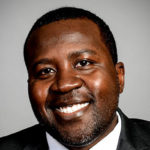- Federal Circuit Hearing More Cases by Phone – The Federal Circuit will increase the number of arguments it hears via phone next month.
- Bad Conduct During Litigation Means Attorneys’ Fees Regardless of Damage Amount – The Federal Circuit disagrees with lowering an award of attorney fees based on a lesser damages award.
- COVID-19 Underscores Diagnostic Patent Eligibility Problems – What is the impact of recent judicial precedent on diagnostic methods?
Here’s the latest.
Federal Circuit Hearing More Cases by Phone, Canceling Fewer
Reported by Perry Cooper on bloomberglaw.com
The Federal Circuit will increase the number of arguments it hears via phone next month. The court heard 26 cases in May. The court is set to hear 35 arguments in June. Perry Cooper reports that the number of canceled arguments has fallen to 19 in June. This number is down from 32 in May.
Bad Conduct During Litigation Means Attorneys’ Fees Against the Government, Regardless of Damage Amount
Reported by Jodi Benassi on natlawreview.com
In Hitkansut LLC, Acceledyne Technologies, LTD, LLC v. United States, issued on May 1, the Federal Circuit disagreed with lowering an award of attorney fees based on a lesser damages award. Hitkansut, the patent owner, was awarded $200,000 in damages. Because the plaintiff initially sought 5 million dollars, the United States argued that the lower court erred by not also reducing the award of attorneys’ fees.
For more on this case, see our coverage.
COVID-19 Underscores Diagnostic Patent Eligibility Problems
Reported by Sharon Walker, Wanda French-Brown and Meghan Rachford on law360.com
What is the impact of recent judicial precedent on diagnostic methods? The authors argue that:
The need for ongoing discovery of diagnostic methods has been highlighted by the recent outbreak of the COVID-19 pandemic — the very novelty of this disease will require innovation, particularly for new diagnostic methods that can be rapidly deployed to a large population. New diagnostic technology in this critical area may not be eligible for patent protection under the current legal landscape.
The article provides an overview of recent patent eligibility decisions and explains the reasons for uncertainty concerning diagnostic methods. The authors conclude:
All hope is not lost for diagnostic patents. As the industry continues to innovate in this area — providing life-saving technologies to patients — it must also consider ways to navigate the path set by the courts. This may be achieved by finding nuances in Federal Circuit holdings to uphold issued patents, modifying patent prosecution strategies to obtain new patents, and working with Congress to forge a clearer path in the future.

